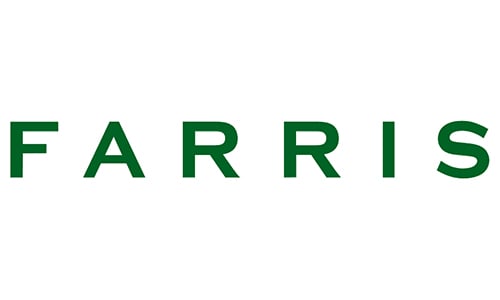Introduction
The “Tax on Split Income” (“TOSI”) regime was implemented by way of amendments to the Income Tax Act (Canada) (the “Tax Act”),[1] effective as of January 1, 2018.
The purpose of the TOSI regime, as described by the Department of Finance, is “to limit the ability of owners of private corporations to lower their personal income taxes by sprinkling their income to family members who do not really contribute to the business.”[2] The TOSI rules are intended to limit the practice of “income splitting” (sometimes referred to as “income sprinkling”): essentially, income splitting involves diverting income away from a high-income-earning family member (that is, income that might otherwise be taxed at a high marginal tax rate) into the hands of a lower-income-earning family member, where it will be subject to a lower tax rate or possibly no tax at all.
The Department of Finance’s press releases relating to TOSI insist that only a small number of taxpayers will actually have to pay additional tax due to these new rules. Unfortunately, due to the complexity of the TOSI regime and the relative uncertainty resulting from limited CRA commentary and a lack of meaningful case law in the early days of a new tax regime, many taxpayers, particularly small business owners, are forced to expend significant time or professional fees to confirm whether or not they are caught by these rules.
Family trusts are no exception and may be more limited by TOSI than a ‘simple’ ownership structure such as an individual holding shares in a private company directly. There are TOSI provisions specifically targeting family trust income, and some exceptions to the TOSI rules are not available where a taxpayer receives funds through a trust.
TAX ON SPLIT INCOME (TOSI)
The TOSI rules impose the top marginal rate of tax on “split income” received by a “specified individual” (both as defined in subsection 120.4(1) of the Tax Act) if no exception applies to shelter the income from TOSI.
The broad definitions of “split income” and “specified individual” mean that in many cases any income received from a family company or through a family trust will be caught, unless an exception applies.
Different exceptions are available depending on the age of the recipient, and only very limited exceptions are available to minors. A detailed discussion of the exceptions is beyond the scope of this article, as they are many and complex. Taxpayers should obtain specific tax advice to assess how the TOSI regime may impact their holdings.
Tax Planning Strategies for Family Trusts Before TOSI
Prior to the introduction of the TOSI rules, Canadian families often used discretionary family trusts to invest in family enterprises for various estate and tax planning purposes, such as:
- to receive and distribute income from a family business among family members in a tax-efficient manner (see above comments regarding “income splitting”); and
- to defer capital gains on a private corporation that would otherwise arise on the death of a particular individual, and to direct the growth in value of the company to future generations of family members during the founding family member’s lifetime.
This sort of planning would typically involve a family trust obtaining shares in a private company with rights to dividends and future growth in value of the company. This might be accomplished by way of a so-called “estate freeze” in which the owner-manager of a company that operates a family business exchanges their generic shares in the company for new fixed-value preferred shares, with redemption value equal to the value of the company at that time, after which a family trust will subscribe for new growth common shares for a nominal amount.
In a typical estate freeze structure, the current value would remain in the hands of the owner-manager and future growth in value of the company would accrue to the new common shares held by the family trust. Prior to the introduction of the TOSI rules, future dividends paid by the company to the trust and any capital gains realized on a future sale of the trust’s shares could be allocated and distributed out to the trust’s beneficiaries and (subject to the kiddie tax rules applicable to dividends allocated to minor beneficiaries) would be taxed at the beneficiaries’ applicable marginal tax rates. Capital gains realized on the sale of “qualified small business corporation shares” (as defined in the Tax Act) could even be sheltered from tax entirely by way of individual beneficiaries’ lifetime capital gains deductions.[3]
Tax Planning Strategies for Family Trusts After TOSI
In a post-TOSI landscape, it is still possible for many small business owners to achieve these planning objectives through family trusts, but there are limitations and tax planning advice should be obtained in order to set up a structure that does not run afoul of the TOSI regime.
For example: the formerly simple structure of a family trust holding shares in the family company does not necessarily enable income splitting to lower-income-earning family members any longer. Unless an exemption applies, dividends paid to a family trust and allocated to a beneficiary related to the owner-manager of the business are likely to be caught by TOSI and thus taxed at the top marginal rate, rather than at the beneficiary’s otherwise-applicable low tax rate.
Some tax planning strategies that existed prior to TOSI still work. Here are some examples of tax planning structures still used today, with appropriate planning to ensure that TOSI will not be tripped:
Estate Freezes
Taxpayers can still undertake estate freezes. The income splitting advantage may be weakened or eliminated, depending on the particular facts and circumstances, but many taxpayers continue to implement estate freezes and bring in family trusts as shareholders of family companies for purposes including: (i) multiplying potential access to the lifetime capital gains deduction; and (ii) deferring capital gains and sharing growth in value with future generations.
Accessing the Lifetime Capital Gains Deduction
Proceeds of dispositions eligible for the lifetime capital gains deduction are exempted from TOSI, so family members can still access that major tax break.
The lifetime capital gains deduction (sometimes called the “lifetime capital gains exemption” or “LCGE”) is a mechanism in the Tax Act that, in essence, allows individuals to sell shares in a “qualified small business corporation” or a “qualified farm or fishing property” (as those terms are defined in the Tax Act) without having to pay tax on proceeds up to a maximum dollar value, currently $892,218. Capital gains on eligible shares sold by a trust can qualify for the lifetime capital gains deduction if the trust allocates and pays the taxable portion of the capital gain and proceeds to one or more qualifying beneficiaries.
The lifetime capital gains deduction can be of significant value to owner-managers with companies carrying on active business in Canada and can be of even greater value where additional family members are able to access the deduction on the sale of shares held through a family trust. This can enable the family to ‘multiply’ the deduction and shelter a greater proportion of the proceeds of sale from tax, by having their family members use their own deductions as well.
Capital Gains Deferral
While it may no longer be desirable for the trust to sprinkle dividends received from the family business among its beneficiaries due to TOSI, the trust can still retain the shares on a long-term basis, thereby shifting to the trust a portion of the ultimate capital gain that would be realized on the shares on the death of the owner-manager. When a Canadian taxpayer dies, the Tax Act deems the person to have disposed of all their capital assets for fair market value proceeds immediately prior to their death, then reacquired them at the same value. The effect of this is that the deceased person’s estate must pay tax on all accrued but unrealized gains on capital assets held by the deceased person.
This remains subject to the 21-year deemed disposition of all trust assets. The Tax Act deems a discretionary family trust to have disposed of all of its capital assets for fair market value proceeds immediately prior to the 21st anniversary of its creation, then reacquired them at the same value. The effect of this is to force the trust to realize all accrued and otherwise unrealized capital gains every 21 years, to avoid an unlimited deferral of capital gains.
21-Year Anniversary Planning
Planning structures are also still available for family trusts to mitigate or defer the tax arising on the 21st anniversary. A family trust approaching its 21st anniversary (and the consequent deemed disposition and reacquisition of its assets) may be entitled to rely on deeming rules in the Tax Act to “roll” assets out to beneficiaries just prior to the 21-year anniversary on a tax-deferred basis. This may enable a family group to defer realizing capital gains beyond the trust’s 21-year anniversary, until the recipient beneficiary ultimately disposes of (or is deemed to dispose of) the assets.
Further, certain exemptions from TOSI are only available to taxpayers who hold shares directly; accordingly, depending on the circumstances it is possible that when a family trust rolls property out to a beneficiary TOSI may cease to apply to dividends received by that beneficiary on shares in the family business.
Prescribed-Rate Loans
Another structure that is available to taxpayers without running afoul of the TOSI rules is a prescribed-rate loan. These enable some limited income splitting if properly structured. The basic structure involves a higher-income-earning family member loaning funds to a lower-income-earning family member, bearing interest at the CRA’s prescribed rate (set quarterly, currently 1% per annum). The interest must be paid by January 30 in each year for the prior calendar year, and the lender will have to report the interest income on their tax return. The borrower can then invest the borrowed funds and generate income, which should not be attributed back to the lender and should not be subject to TOSI (though this may depend on the particulars of the investment for which the borrowed funds are used).
Who can access these strategies?
Some tax planning opportunities remain available to any family trust with relevant assets. Income splitting, to the extent available, will always be most advantageous in a family group with an income-earner in the top marginal tax bracket and another in a low bracket or earning no income, and the TOSI rules will present the greatest risk where a private family business is involved.
The relevant planning goals, and the structures that will be most advantageous, will always depend on the specific circumstances of a particular taxpayer. For example: multiplication of the lifetime capital gains exemption will be of interest to entrepreneurs or investors in private companies carrying on active businesses primarily in Canada, but will not be of use to incorporated professionals or taxpayers who own shares in passive investment companies as they cannot access this tax break.
Similarly, long term capital gains deferral within a family group may be a paramount concern for a taxpayer who already has enough value to retire on and expects to live for many years hence, but may not be of interest to a taxpayer with a terminal illness or who expects to close or sell their business in the near future, as there will not be much time for growth to accrue to other shares in those cases.
COVID Impacts: Estate Freezes and Refreezes
In this uncertain time, some businesses have decreased in value. For example, many businesses in the retail and restaurant sphere have struggled to maintain previous profit margins. In such circumstances, it may be advantageous from a tax perspective to undertake an estate freeze in favour of a family trust now, capping the original shareholder’s equity at the depressed value such that if the company rebounds in future a greater proportion of the overall value will be attributable to the new growth shares held by a family trust.
Another option is to “re-freeze” a company that was subject to a previous estate freeze. A re-freeze involves the same type of reorganization, but at a lower value than the original freeze. The original shareholder may be able to exchange their fixed-value preferred shares for new fixed-value preferred shares with a lower value, due to the decrease in overall value of the company.
A current freeze or refreeze (as applicable) may enable an owner-manager to decrease the capital gain that would otherwise be realized when they die, and direct future growth in value to their family members by way of a family trust.
Concluding Comments
While the TOSI regime has limited income splitting opportunities and made it more difficult and more expensive for taxpayers to obtain certainty as to the tax consequences of their holdings, there are some opportunities still available to taxpayers who own or invest in a family enterprise through a family trust.
***
 Rebecca Cynader is a tax lawyer and a member of the Private Enterprise Group at Farris. Her practice involves all aspects of income tax law including corporate and personal tax planning and tax disputes, with a focus on tax planning for individuals and privately-held companies. Rebecca frequently assists clients with tax planning and structuring for family businesses, trust planning, and implementing tax-driven reorganizations. Rebecca also regularly represents clients in tax audits and other CRA disputes, and works with non-profit entities and registered charities in navigating the tax implications of non-profit and registered charitable status.
Rebecca Cynader is a tax lawyer and a member of the Private Enterprise Group at Farris. Her practice involves all aspects of income tax law including corporate and personal tax planning and tax disputes, with a focus on tax planning for individuals and privately-held companies. Rebecca frequently assists clients with tax planning and structuring for family businesses, trust planning, and implementing tax-driven reorganizations. Rebecca also regularly represents clients in tax audits and other CRA disputes, and works with non-profit entities and registered charities in navigating the tax implications of non-profit and registered charitable status.
Prior to joining Farris, Rebecca completed a clerkship at the Tax Court of Canada in Ottawa after articling at a full-service firm in Vancouver. Rebecca has completed the CPA Canada In Depth Tax Course and avidly studies new developments in Canadian income tax law.
***
[1] Income Tax Act (Canada) RSC 1985, c.1 (5th Supp), as amended. Unless otherwise stipulated, all statutory references herein are to the Tax Act.
[2] Department of Finance News Release, December 13, 2017.
[3] See further discussion of the lifetime capital gains deduction below.





